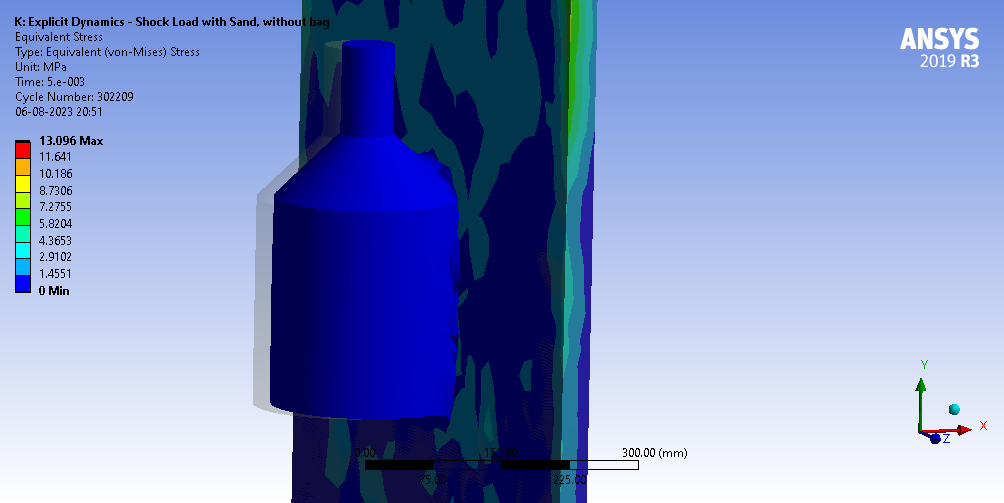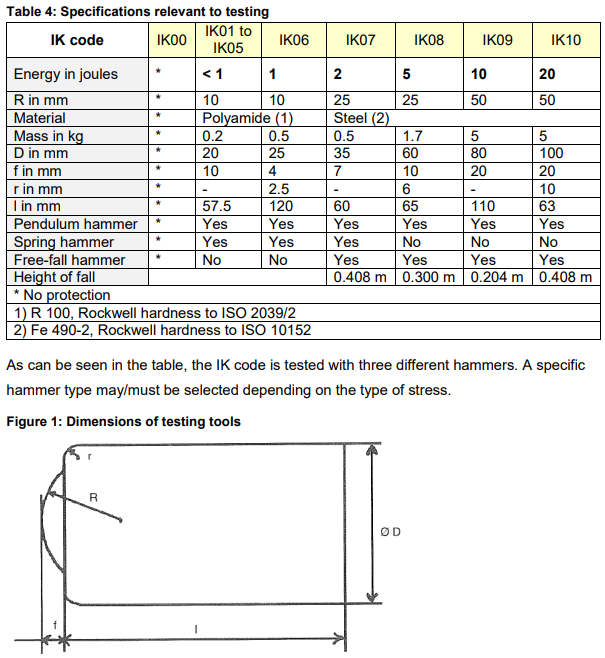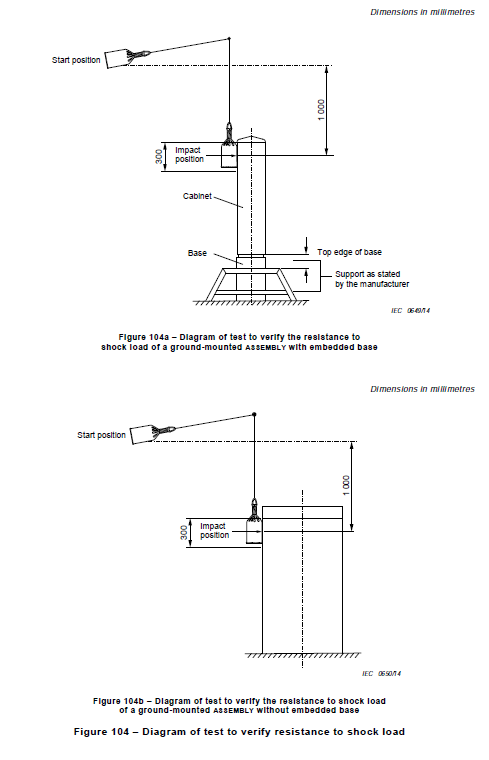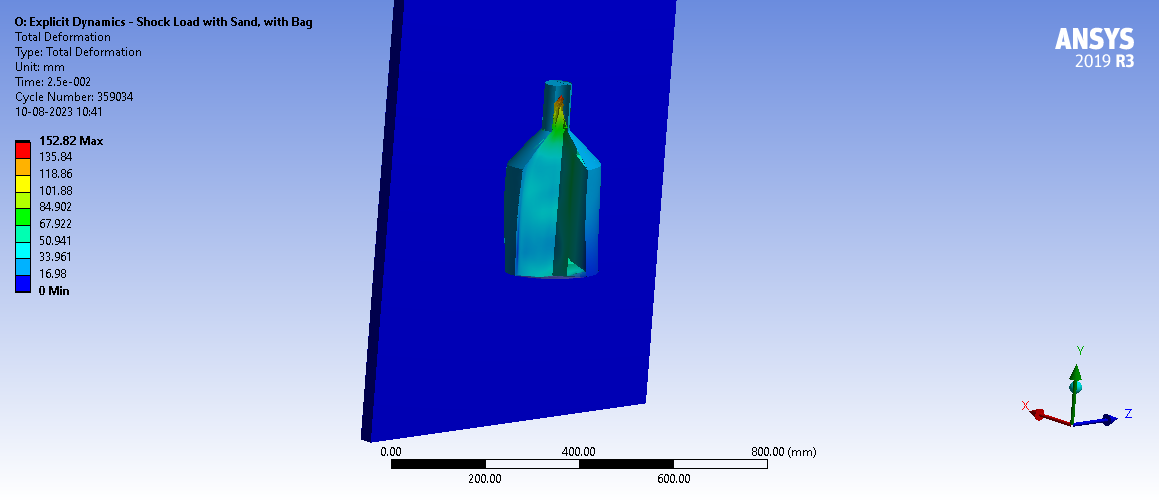-
-
August 2, 2023 at 6:30 am
Kaushal Sawant
SubscriberDear All,
Good Day !
I am trying to perform a simulation using explicit dynamics. The description is as below:
- The sandbag would impact on the enclosure cover.
- The sandbag weighs 15 kg.
- The sandbag will act just like a pendulum.
- The impact would create a vibrations in the enclosure.
Below are my assumption:
- Assign the denisty of a dummy model equivalent to that of sandbag
- Assign the explicit property of sand (similiar to that of water)
- Use either rope or trajectory to define the movement of sand, set the initial velocity of sand bag to zero and apply standard earth gravity. The sandbag will follow the trajectory or hung by the rope will hit the enclsoure.
Query:
- Is it possible to define trajectory ?
- Is it possible to define the property of sandbag as explicit material ? Or do I need to create material with sack thickness and filled with sand ?
- Is it possible to define the rope property ?
Any help would be appreciated.
-
August 3, 2023 at 2:22 pm
dlooman
Ansys EmployeeYou need to somehow model the sandbag itself to capture its softness and energy damping effect. The analysis should be begun with the sandbag just making initial contact with the structure and given an initial velocity based on a hand calculation.
-
August 3, 2023 at 6:25 pm
peteroznewman
SubscriberI agree with Dave Looman, I will expand on some details in my description below.
Place the sandbag tangent to the enclosure using the CAD system (or Part Transform in Mechanical) and assign the sandbag an Initial Velocity equal to the impact velocity.
Calculate the impact velocity separately using either equations for pendulum motion, an online calculator, or build a model in Rigid Dynamics. In Rigid Dynamics, use a single body the size of the sandbag (no enclosure). Make sure the density is adjusted so that the mass is equal to 15 kg. Place a Revolute Joint to ground at the location where the string would be anchored. Turn on Standard Earth Gravity to accelerate the pendulum from rest. Plot the velocity of the center of the body vs the angle of the Revolute Joint. Set the solver to take small time steps so you get plenty of results in the Tabular Data. Interpolate the table for the angle at impact to obtain the impact velocity.
-
August 6, 2023 at 3:31 pm
Kaushal Sawant
Subscriber@peteroznewman I did the RBD and obtained velocity as 4228 mm/s. Please refer the new reply for some additional query. Thank you for your technique of finding the velocity.
-
-
August 4, 2023 at 3:29 am
Kaushal Sawant
SubscriberDear All,
Thank you so much for your response. I will definitely use the approach of rigid dynamics to plot the velocity. However, question arises how to model the sandbag. I agree that in order to replicate the weight, we need to change the density. But, how do I assign sand material to that particular component ? Explicit material has SAND property, but do I need to add sack as well, as it's covering with specific thickness?-
August 6, 2023 at 3:28 pm
Kaushal Sawant
SubscriberOkay, I did the analysis with SAND as material of the striker (sandbag). However, I am unable to undertstand if the obtained solution is correct or not. The ‘sand without sack’ will definitely deform, but will the impact of ‘sand with sack’ be the same as ‘sand without sack’ ? Afterall the sand is the one who is responsible for the stress. But with the sack the sand will retains it particular shape and will be somewhat stiff. If this is correct, I did the analysis of sand with the sack as well, but the results were highly vague. Please advise. Attached are the images in both the scenarios:
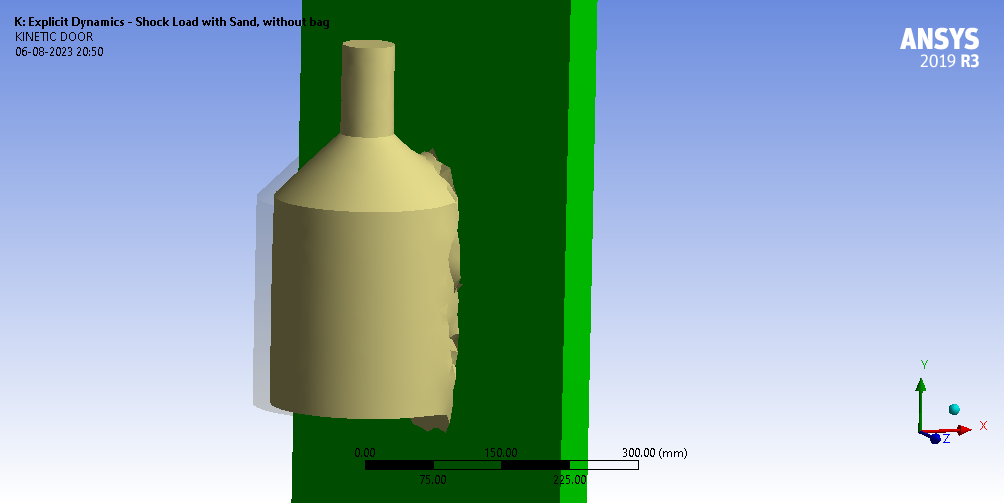
Sand with sack:
There was no contact between the sand and the sack. The sack was modelled as a shell with 0.6mm thickness and assigned POLYETHYLENE as material, while sand was modelled as a solid element and assigned SAND as material. They are having shared topology. refer below link for @peteroznewman answer on modelling water tank.
/forum/forums/topic/how-to-apply-water-weight-in-a-container/
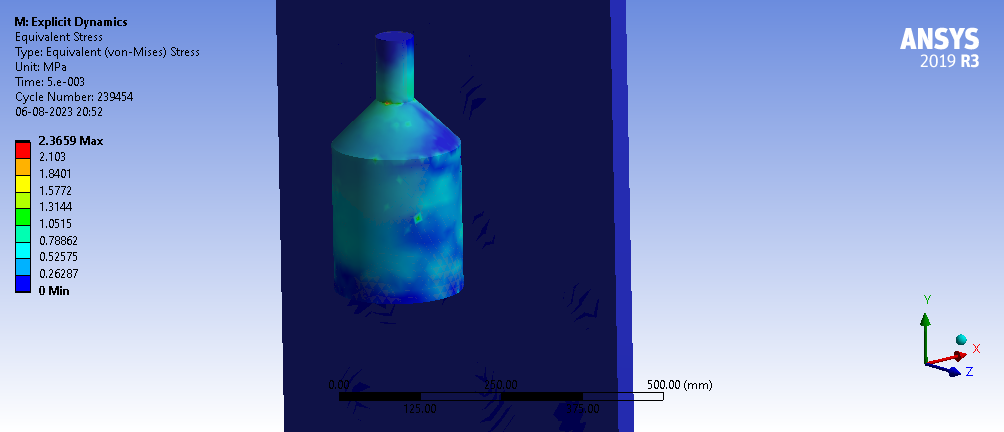
Analysis settings:
thank you all for your prompt responses, you are really being helpful in learning Ansys.
-
-
August 6, 2023 at 5:27 pm
peteroznewman
SubscriberInstead of using a sandbag, which is difficult to model, have you considered using an International Standard such as IEC 62262?
The IEC 62262 standard describes how impact protection tests on enclosures are conducted. It is used to determine the protection provided against external stresses (damage to or effect of impact/energy on the enclosure) for safeguarding equipment.
It would be much simpler to model the steel hammer from this standard.
-
August 7, 2023 at 3:12 am
Kaushal Sawant
Subscriber@peteroznewman, the standard you have mentioned is ‘resistance to mechanical impact’, while the analysis I am trying to solve in Ansys is ‘resistance to shock load’. These are two distinct tests. The latter one from IEC 61439-7. Please find below excerpt from the standard.

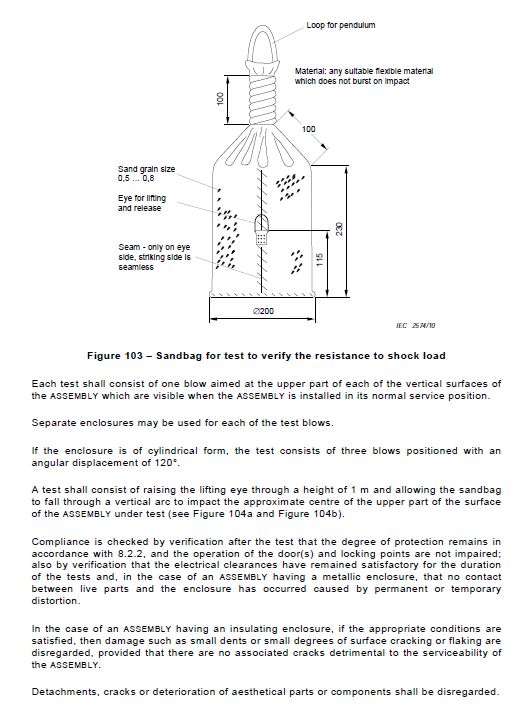
Apologies for not posting this earlier, this could have reduced the confusion.
And I have conducted analysis using striker (hammer pendulum) as well for checking ‘resistance to mechanical impact’.
-
August 8, 2023 at 3:56 am
Kaushal Sawant
Subscriber@peteroznewman, In the first attempt, I did a mistake. I assigned a velocity only to sack and not sand, hence it showed stress on sack. Now, I have assigned velocity to both sand and sack and got the results.
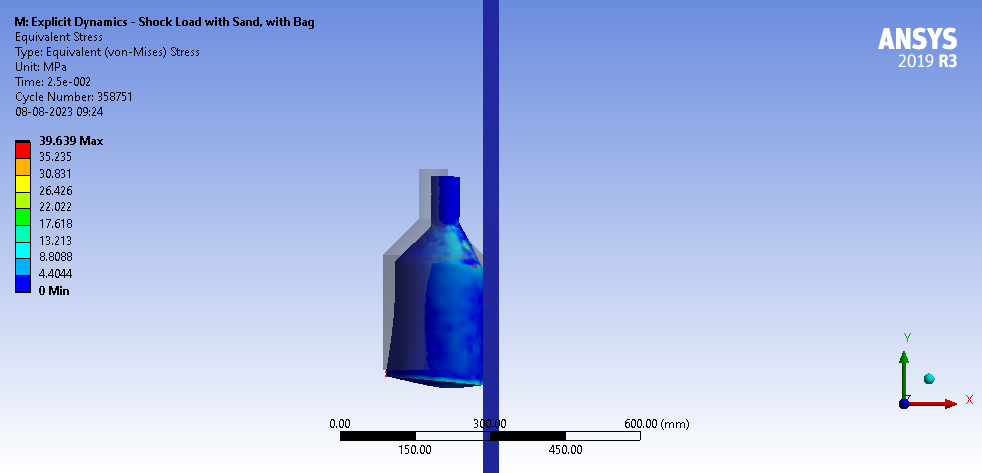
Bottom view: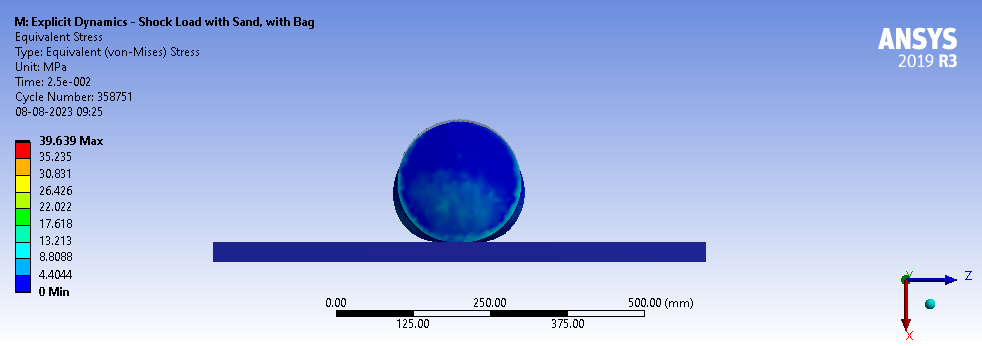
Stress on door was found to be 13 MPa. Could you please if the above approach is correct ?
-
-
August 8, 2023 at 11:57 am
peteroznewman
SubscriberWhen you create a Stress result, instead of taking the default of All Bodies, select the door body. That way the Legend will autoscale to the highest stress in the door.
Don’t plot the maximum stress at the End Time, select the Maximum over Time. I can’t recall if that is the exact wording, but pull down on the list and you will see it.
How many output frames did you request in the Output controls? The default is 20. You can increase that to 200 to get finer resolution of the time history.
-
August 10, 2023 at 5:12 am
Kaushal Sawant
Subscriber@peteroznewman, thanks for your reply.
1. Selected the door as the desired object and plotted the stress value. The stress value (max. over time) was 25.993 MPa. Please see attached image
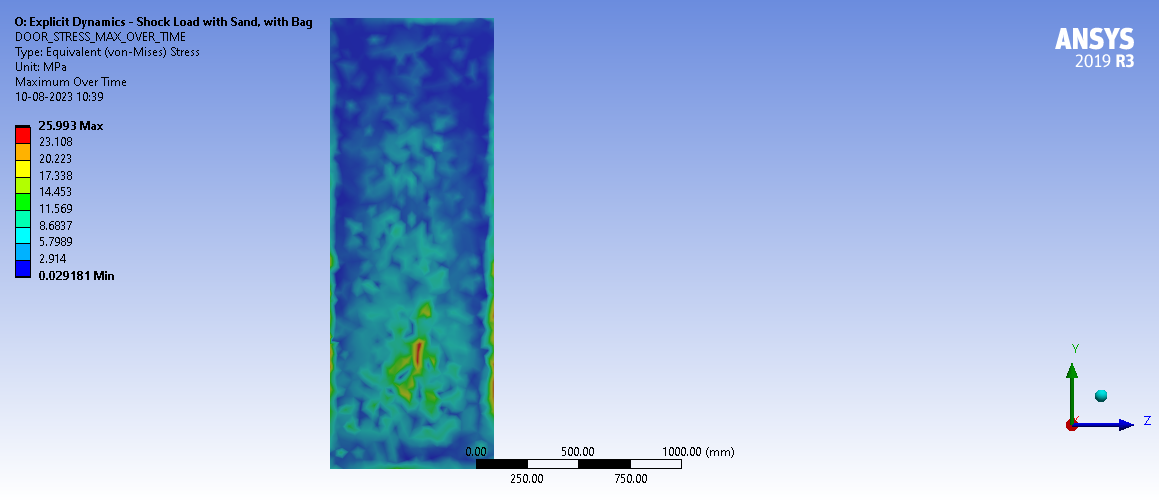
2. Okay, see above image.
3. I increased the output frames to 200 and got finer resolution.
However, is my approach correct. ?
Some more images?
Behaviour of sand in bag.
-
-
August 10, 2023 at 10:21 am
peteroznewman
SubscriberYes Kaushal, this approach is correct.
What you also need to check is that the door has gone past peak deformation. Your end time was 0.005 s. I don’t know if 0.005 s is long enough. Change the End Time to 0.050 s.
Plot the Directional Deformation (X-axis) of the Door. Make sure that the maximum value increases to a peak and then starts to decrease. In that way, you know that you have seen the maximum stress during the impact event.
-
August 10, 2023 at 11:40 am
Kaushal Sawant
Subscriber@peteroznewman, thank you for your confirmation. The latest analysis (stress with 25.993 MPa) had the end time as 0.025s. I increased the end time with the same reason you quoted. Moreover, if I go on increase the end time, the maximum clock time goes very high. Due to limitations of license usage I have limited it to 0.025s. The stress was damped after achieving the peak value.
-
-
- The topic ‘Shock loading using sandbag impact’ is closed to new replies.


- LPBF Simulation of dissimilar materials in ANSYS mechanical (Thermal Transient)
- Convergence error in modal analysis
- APDL, memory, solid
- Meaning of the error
- How to model a bimodular material in Mechanical
- Simulate a fan on the end of shaft
- Real Life Example of a non-symmetric eigenvalue problem
- Nonlinear load cases combinations
- How can the results of Pressures and Motions for all elements be obtained?
- Contact stiffness too big

-
4167
-
1487
-
1338
-
1188
-
1021

© 2025 Copyright ANSYS, Inc. All rights reserved.

